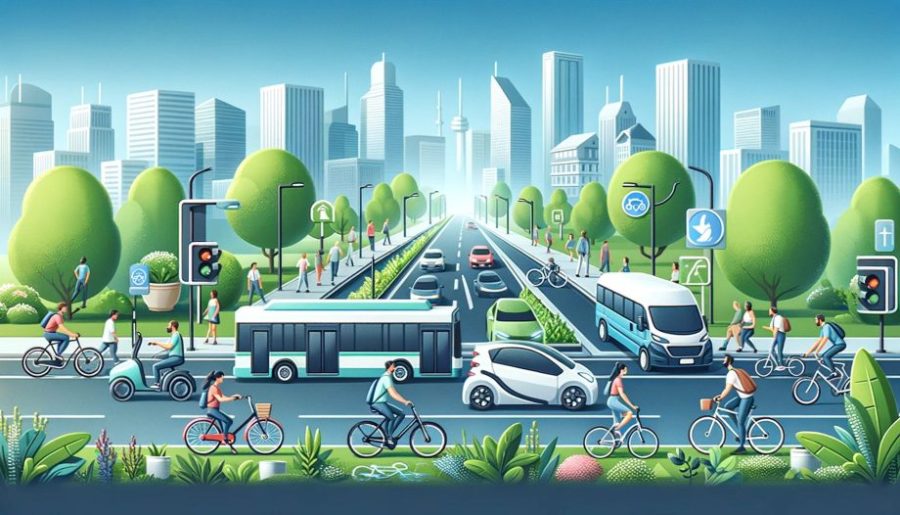
Why is sustainable transport important for a healthier planet and community? Dive into eco-friendly solutions reshaping our travel.
Why Sustainable Transport Is Important? Key Takeaways:
- Why sustainable transport is important lies in its ability to significantly reduce environmental impact.
- It decreases greenhouse gas emissions, lessens reliance on non-renewable energy sources, and improves air quality.
- Sustainable transportation also fosters healthier communities and supports global efforts against climate change, making it a crucial aspect of our future.
Ever wondered why is sustainable transport important? In today’s world, as we grapple with climate change and urban congestion, sustainable transport isn’t just a good idea; it’s essential.
It’s about clean air, efficient travel, and a healthier environment for us all. Let’s explore how green transportation options are making a big difference.
What Is Sustainable Transport?
Sustainable transport is a game-changer in modern mobility, focusing on reducing environmental impact and enhancing efficiency.
It encompasses transportation methods that minimize emissions, like electric vehicles, public transit, cycling, and walking, aiming for a greener, cleaner, and more equitable way of moving people and goods.
Sustainable transport refers to ways of transportation that are sustainable in terms of their social and environmental impacts. Components for evaluating sustainability include the particular vehicles used for road, water or air transport; the source of energy; and the infrastructure used to accommodate the transport. Wikipedia
What Makes Transportation Sustainable?
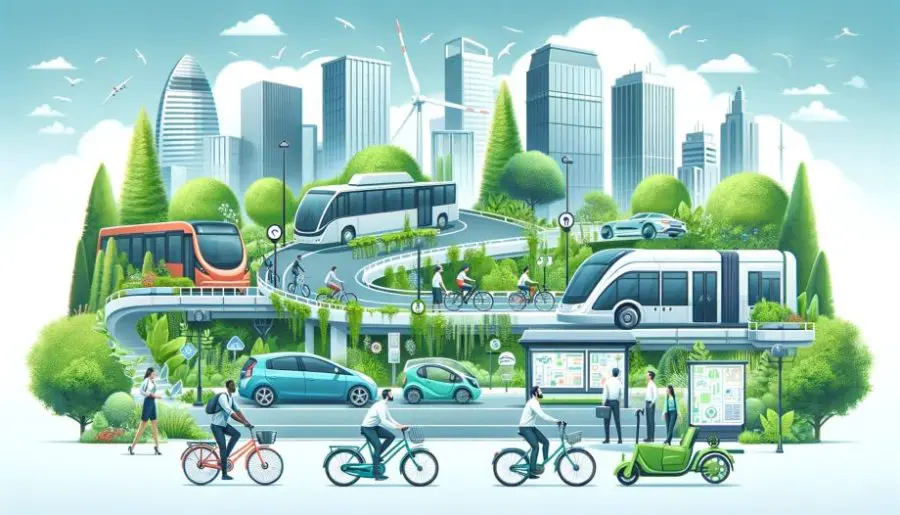
Sustainable transportation is a crucial component in our journey towards a greener future.
It encompasses not just the environmental benefits, but also the social and economic impacts.
This section delves into what sustainable transportation really means, exploring its key characteristics and how it can be integrated into our daily lives and urban landscapes.
Characteristics of Sustainable Transportation: Efficiency, Low Emissions, Affordability
- Efficiency: Sustainable transportation is marked by its efficient use of resources. This includes optimizing fuel consumption and reducing waste.
- Low Emissions: A core attribute of sustainable transport is its minimal environmental impact, particularly in terms of greenhouse gas emissions. This is crucial in combating climate change and preserving air quality.
- Affordability: Sustainable transport systems are not only environmentally friendly but also economically viable. They offer cost-effective options for both individuals and societies.
Examples: Electric Vehicles, Public Transportation, Cycling

- Electric Vehicles (EVs): EVs are a prime example of sustainable transportation. They emit fewer greenhouse gases and pollutants compared to conventional vehicles.
- Public Transportation: Buses, trains, and other forms of public transport significantly reduce the number of vehicles on the road, leading to lower emissions and decreased traffic congestion.
- Cycling: Promoting cycling as a mode of transport contributes to reduced emissions, lesser road congestion, and healthier lifestyles.
The Role of Policy and Urban Planning in Sustainable Transportation
- Government Policies: Effective policies are essential in promoting sustainable transportation. This includes incentives for EVs, investment in public transport infrastructure, and regulations that encourage low-emission vehicles.
- Urban Planning: Integrating sustainable transport into urban planning is key. This involves creating pedestrian-friendly spaces, and bike lanes, and ensuring easy access to public transport. Urban planning can significantly influence the shift towards sustainable transportation by making it a more convenient and accessible option.
Table: What Makes Transportation Sustainable?
| Aspect | Description | Example |
|---|---|---|
| Efficiency | Use of resources in an effective manner | High-capacity public transit |
| Low Emissions | Reduced greenhouse gas and pollutant emissions | Electric vehicles |
| Affordability | Economically viable for users and societies | Bike-sharing programs |
In a Nutshell:
In summary, sustainable transportation is defined by its efficiency, eco-friendliness, and affordability.
It includes a range of practices and modes, from electric vehicles to cycling and well-designed public transport systems.
Effective policies and urban planning play a pivotal role in making sustainable transportation a feasible and attractive option for all.
How Can We Make Transportation Sustainable?
Making transportation sustainable requires a multifaceted approach, combining technology, policy, and community involvement.
This section explores practical strategies and actions that can drive the transition towards more sustainable transportation systems, each playing a unique role in shaping a greener, more efficient future.
Promoting Public Transportation: Benefits and Challenges
- Benefits: Public transportation reduces the number of individual vehicles on roads, decreasing traffic congestion and pollution. It’s a cost-effective and efficient way to move large numbers of people.
- Challenges: Key challenges include ensuring reliability, coverage, and accessibility. Investment in infrastructure and services is essential to make public transport a preferred choice for commuters.
The Shift to Electric and Hybrid Vehicles: How They Contribute to Sustainability
- Reducing Emissions: Electric and hybrid vehicles play a significant role in cutting down greenhouse gas emissions, a critical factor in combating climate change.
- Energy Efficiency: These vehicles are more energy-efficient and have a lower operating cost over time compared to traditional fossil fuel-powered cars.
Encouraging Active Transportation: Walking and Cycling as Sustainable Options
- Health and Environmental Benefits: Active transportation like walking and cycling not only reduces emissions but also promotes physical health and well-being.
- Urban Design: Creating safe and convenient infrastructure for pedestrians and cyclists is vital. This includes dedicated bike lanes, pedestrian zones, and ensuring connectivity with other modes of transport.
Role of Technology and Innovation in Sustainable Transport
- Advancements in Transportation Technology: Innovations in vehicle design, fuel efficiency, and alternative fuels are key to sustainable transport.
- Smart Transportation Systems: Leveraging technology for smart traffic management, efficient routing, and integration of different modes of transport enhances the overall sustainability of transportation systems.
Table: How Can We Make Transportation Sustainable?
| Strategy | Description | Impact |
|---|---|---|
| Promoting Public Transportation | Encouraging the use of buses, trains | Reduces traffic congestion, lowers emissions |
| The Shift to Electric/Hybrid Vehicles | Transitioning to low-emission vehicles | Decreases reliance on fossil fuels, reduces pollution |
| Encouraging Active Transportation | Supporting walking, cycling | Improves public health, reduces carbon footprint |
| Utilizing Technology and Innovation | Implementing smart transportation systems | Enhances efficiency, integrates different transport modes |
In a Nutshell:
In conclusion, making transportation sustainable is achievable through a combination of promoting public transportation, transitioning to electric and hybrid vehicles, encouraging active transportation, and leveraging technology and innovation.
Each element plays a crucial role in creating a more sustainable, efficient, and environmentally friendly transportation ecosystem.
Why is Sustainable Transportation Important?
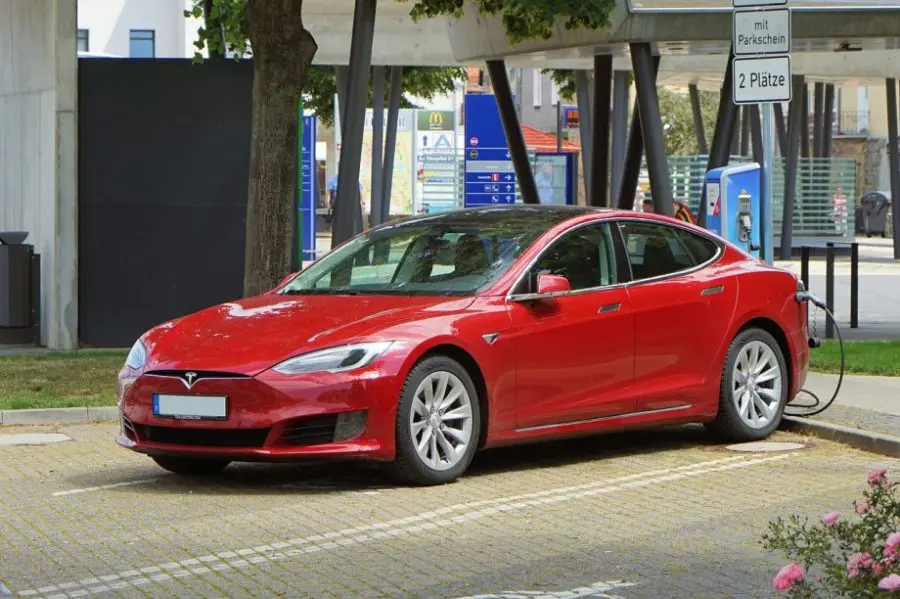
Sustainable transportation is more than a trend; it’s a vital solution to some of the most pressing environmental and societal issues of our time.
This section underscores the importance of sustainable transportation, highlighting how it can lead to significant environmental, social, and economic benefits.
Sustainable transport is vital for several reasons:
- Environmental Protection: It significantly reduces greenhouse gas emissions and air pollution, contributing to the fight against climate change.
- Public Health: Cleaner air means fewer health problems like asthma and heart disease.
- Efficiency and Cost Savings: Sustainable transport methods like public transit and cycling are often more efficient and less expensive in the long run than car travel.
- Reduced Congestion: Fewer cars on the road mean less traffic, making cities more livable and commutes faster.
- Energy Conservation: It lessens reliance on non-renewable energy sources, promoting a more sustainable use of resources.
Environmental Benefits: Reduced Emissions, Conservation of Natural Resources
- Reduced Greenhouse Gas Emissions: By lowering reliance on fossil fuels, sustainable transportation helps significantly reduce greenhouse gas emissions, a key factor in combating climate change.
- Conservation of Resources: Sustainable transportation methods, like electric vehicles and cycling, are less dependent on non-renewable energy sources, aiding in the conservation of these precious resources.
Social and Health Benefits: Improved Air Quality, Reduced Noise Pollution, Healthier Communities
- Improved Air Quality: Sustainable transportation modes contribute to better air quality by reducing pollutants. This can lead to fewer health issues, such as respiratory diseases.
- Reduced Noise Pollution: Quieter transportation options contribute to a more serene urban environment, enhancing the quality of life for city inhabitants.
- Healthier Communities: Encouraging active transportation like walking and cycling can have significant health benefits, promoting physical activity and well-being among the population.
Economic Impacts: Cost Savings, Job Creation, Economic Growth
- Cost Savings: Sustainable transportation can lead to significant cost savings for both individuals and governments, through reduced fuel consumption and lower healthcare costs due to improved air quality.
- Job Creation: The shift towards sustainable transportation can create new jobs in sectors like public transportation, bicycle manufacturing, and infrastructure development.
- Economic Growth: Investing in sustainable transport infrastructure can stimulate economic growth by improving access to markets and services, and by fostering a more efficient and productive workforce.
Table: Why is Sustainable Transportation Important?
| Benefit Type | Description | Example Impact |
|---|---|---|
| Environmental | Positive effects on the environment | Reduced carbon emissions, conservation of natural resources |
| Social and Health | Benefits to public health and community well-being | Improved air quality, reduced noise pollution |
| Economic | Economic advantages | Cost savings, job creation, economic growth |
In a Nutshell:
In essence, the importance of sustainable transportation extends beyond just environmental preservation.
It plays a crucial role in fostering healthier communities and driving economic growth, making it a key component in building a more sustainable and prosperous future.
Sustainable Transportation Ideas
In the quest for a greener future, innovative and practical ideas in sustainable transportation are leading the way.
This section explores a range of creative solutions, from pioneering urban transportation models to grassroots community initiatives, offering a glimpse into the future of sustainable travel.
Innovative Urban Transportation Models: Case Studies from Different Cities
Integrated Public Transport Systems
Cities like Singapore and Curitiba, Brazil, are lauded for their integrated public transport systems. Singapore’s efficient system seamlessly connects buses, trains, and subways, making transit easy and reducing car usage.
Curitiba’s Rede Integrada de Transporte network is designed around Bus Rapid Transit (BRT), offering high-capacity, cost-effective public transport.
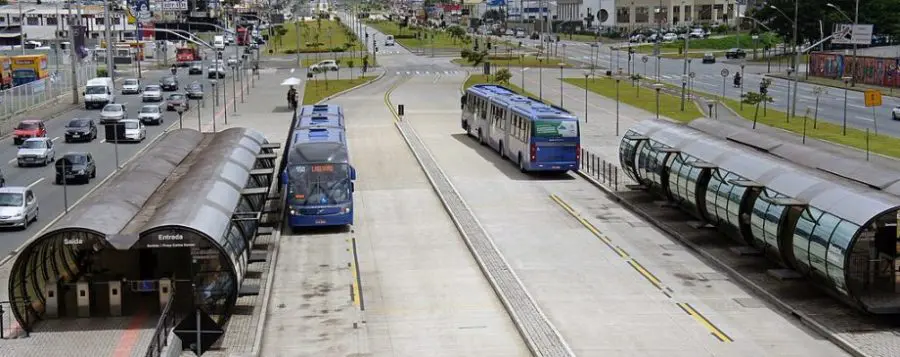
Smart Bike-Sharing Programs
Paris with Vélib’ and Hangzhou, China, with its extensive bike-share program, stand out as cities that have successfully integrated bike-sharing into their urban fabric.
These programs offer convenient, affordable, and flexible mobility options, significantly enhancing urban mobility and reducing reliance on motor vehicles.
Electric Public Transit
Cities like Shenzhen, China, which boasts the world’s first all-electric bus fleet, and Oslo, Norway, with its commitment to electric buses, are pioneering the shift towards electric public transit. This transition is dramatically reducing urban emissions and noise pollution.
Community Initiatives and Grassroots Movements: Local Examples of Sustainable Transport
Neighborhood Carpooling Schemes
- In places like Portland, Oregon, neighborhood carpooling initiatives are organized through platforms like Getaround, reducing the number of vehicles on the road and fostering a sense of community while cutting emissions.
Community-Led Cycling Campaigns
- Amsterdam and Copenhagen are exemplary in promoting cycling through community-led efforts. These cities have developed extensive bike lanes and bike parking facilities, and host events that encourage cycling, making it an integral part of urban life.
Local Policy Advocacy
- San Francisco’s advocacy group, the San Francisco Bicycle Coalition, has been instrumental in pushing for bike-friendly policies, leading to more than 450 miles of bike lanes and paths in the city, showcasing the power of local policy advocacy in promoting sustainable transportation.
Future Trends in Sustainable Transportation: What’s Next on the Horizon?
Autonomous Vehicles
- The potential of autonomous vehicles to revolutionize urban transport lies in their ability to reduce accidents, optimize traffic flow, and decrease the need for personal car ownership. Cities like Phoenix, Arizona, are already testing self-driving car services, hinting at the future of urban mobility.
Hydrogen Fuel Cells
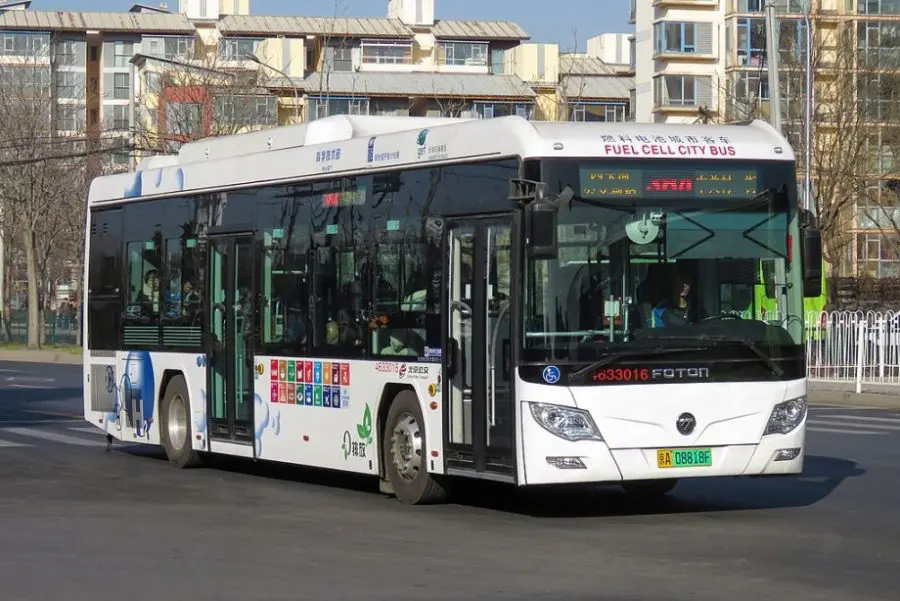
- With cities like Tokyo and Hamburg introducing hydrogen fuel cell buses, the technology is set to play a crucial role in future transportation. These vehicles emit only water vapor, offering an environmentally friendly alternative to fossil fuels.
Mobility as a Service (MaaS)
- MaaS platforms, such as Helsinki’s Whim app, aggregate various transport services, including buses, trains, taxis, bikes, and car rentals, into a single, accessible service. This model promises a shift away from car ownership to a more flexible, efficient, and sustainable urban transport system.
In a Nutshell:
These ideas not only represent current successes in sustainable transportation but also pave the way for future innovations.
As we continue to develop and implement these ideas, we move closer to realizing a more sustainable and efficient transportation system worldwide.
FAQs on Sustainable Transportation
Sustainable transportation often raises several questions about its nature, benefits, and implementation.
This section aims to address some of the most common queries, providing clear, concise answers to deepen understanding and encourage engagement in sustainable transport practices.
Q: What is an example of sustainable transportation?
A: An example of sustainable transportation is the use of electric vehicles, which operate on electricity and emit no exhaust gases, thereby reducing air pollution and dependence on fossil fuels.
Q: What is the most sustainable way of transport?
A: The most sustainable way of transport is typically non-motorized modes like walking or cycling. These modes have negligible environmental impact and promote health benefits.
Q: What is sustainable travel and transport?
A: Sustainable travel and transport refer to modes of transportation that have a low environmental impact, promote efficient use of resources, and are accessible to all sections of society. This includes public transit systems, cycling, walking, and the use of electric or hybrid vehicles.
Q: What are the goals of sustainable transport?
A: The goals of sustainable transport include reducing greenhouse gas emissions, minimizing pollution, conserving energy, promoting equity and social inclusiveness, and enhancing the overall efficiency and safety of transportation systems.
Q: What are 5 sustainable transportation modes?
A:
- Public transit (buses, trains)
- Bicycling
- Walking
- Car-sharing using electric or hybrid vehicles
- Electric scooters or bikes
Q: Why should we switch to sustainable transport?
A: Switching to sustainable transport is crucial to reduce environmental impact, particularly greenhouse gas emissions, improve air quality and public health, conserve natural resources, and create more livable, efficient urban environments.
Q: Who benefits the most from sustainable transportation?
A: Everyone benefits from sustainable transportation, including urban residents who enjoy cleaner air and less congestion, people who experience improved health outcomes due to reduced pollution, and the global community through the mitigation of climate change.
Q: What are the problems with sustainable transport?
A: Problems with sustainable transport include higher initial costs for infrastructure and vehicles, technological limitations (such as battery range in electric vehicles), the need for widespread behavior change, and sometimes limited accessibility or convenience compared to conventional transport.
Q: How effective is sustainable transportation?
A: Sustainable transportation is highly effective in reducing environmental impact, particularly in lowering greenhouse gas emissions and urban air pollution. It also contributes to improved public health, energy conservation, and enhanced urban mobility. However, the effectiveness can vary based on the extent of adoption and integration into existing transportation systems.
Why Is Sustainable Transport Important? Conclusion
As we’ve explored, sustainable transportation is not just a beneficial choice, but a necessary one for our planet’s health and our quality of life.
This journey towards eco-friendly transportation and sustainability in transport involves a collective effort and a shift in how we view and use transportation.
Recap of the Importance of Sustainable Transport
- Sustainable transportation significantly reduces environmental impacts, notably greenhouse gas emissions and pollution, helping combat climate change and preserve air quality.
- It also offers social and health benefits, such as improved public health due to better air quality and reduced noise pollution, as well as encouraging physical activity through walking and cycling.
- Economically, sustainable transportation can lead to cost savings, job creation, and contribute to economic growth through efficient and eco-friendly transport systems.
Call to Action: Encouraging Reader Involvement and Support for Sustainable Transport Initiatives
- Individuals can make a difference by choosing more sustainable modes of transport, like walking, cycling, or using public transit.
- Support local and national policies that promote sustainable transportation. This can include advocating for better cycling infrastructure, more efficient public transport systems, and incentives for electric vehicle use.
- Stay informed and spread awareness about the benefits of sustainable transport. Sharing knowledge and experiences can inspire others to make eco-friendly transportation choices.
Final Thoughts
In conclusion, embracing sustainable transportation is a vital step towards a healthier, more sustainable future.
It requires the collective effort of individuals, communities, governments, and businesses.
By understanding its importance and taking action, we can all contribute to creating a more sustainable world.
Resources
For those interested in diving deeper into the world of sustainable transportation, here are some valuable resources and readings:
- Scale Climate Action: Benefits of Sustainable Transportation
- Overview: Discusses the various benefits of sustainable transportation, including reduced traffic congestion and climate change mitigation.
- Link: Scale Climate Action
- Climate Selectra: Sustainable Transport
- Overview: Offers insights into different modes of transport and their environmental impacts, including comparisons between trains and cars, and airplanes versus trains.
- Link: Climate Selectra
- UCLA Transportation: Environmental Benefits of Sustainable Transportation
- Overview: Highlights five key environmental benefits of sustainable transportation, such as less pollution and clearer skies.
- Link: UCLA Transportation
- United Nations Sustainable Development: Sustainable Transport
- Overview: Provides a comprehensive look at sustainable transport in the context of sustainable development, including its role in energy efficiency and reducing pollution.
- Link: UN Sustainable Development
- International Institute for Sustainable Development: The Road to Sustainable Transport
- Overview: Explores various initiatives and programs worldwide that promote sustainable transport.
- Link: IISD
- UN News: Sustainable Transport Key to Green Energy Shift
- Overview: Details the role of sustainable transport in sustainable development and climate action.
- Link: UN News
- Department of Economic and Social Affairs: Sustainable Transport
- Overview: Discusses the role of business in advancing sustainable transport.
- Link: UN DESA
- UN Environment Programme: Why Transport Matters
- Overview: Elaborates on why transport is fundamental to economic activity and human welfare, and its environmental impacts.
- Link: UNEP
- Taylor and Francis Insights: Sustainable Mobility in Cities
- Overview: Discusses the need for sustainable mobility in cities, focusing on issues like equality and fossil fuel dependence.
- Link: Taylor and Francis Insights
These resources provide a wealth of information for those looking to understand the various facets of sustainable transportation, its importance, and the steps being taken globally to promote it.






